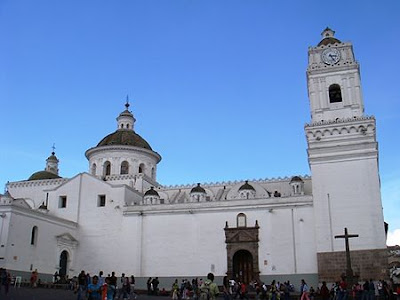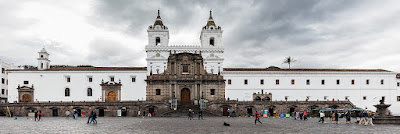Pioneer Bishops of Iowa
This blog will discuss bishops that served in Iowa up to 1900. For more information about Iowa, see my blog of April 10, 2017.
A party led by the French explorer, Louis Joliet, and the French Jesuit, Father Jacques Marquette, were the first Catholics to visit what is now Iowa. Coming down the Wisconsin River, they “discovered” the Mississippi River and saw the land that is now Iowa on June 17, 1673. However, European and American settlement was slow in coming to Iowa. Julien Dubuque, a French Canadian, operated lead mining operations near the present-day city of Dubuque from 1788 to 1810. Iowa became part of the United States as part of the Louisiana Purchase in 1803 and the Army operated Fort Madison from 1808 to 1813.
It was not until the conclusion of the Black Hawk War in 1832 that eastern Iowa was opened to settlers and settlements were quickly made, including Dubuque in 1833 and Davenport in 1836. Iowa became part of the Wisconsin Territory in 1836, became the Iowa Territory in 1838, and became the 29th State in 1846.
Catholic activity also began quickly after the conclusion of the Black Hawk War. A Jesuit priest, Father Charles van Quickenborne, came to what is now Keokuk in 1832 and Dubuque in 1833. St. Raphael’s Cathedral parish, the oldest Christian church in Iowa, dates to 1833 when Father C.P. Fitzmorris of Galena, Illinois, said the first Mass in Iowa at a private home in Dubuque. A Dominican priest, Father Samuel Mazzuchelli, built the first St. Raphael’s church in 1836 and built St. Anthony’s Church in Davenport in 1837. Many of the first Iowa settlers were French, German, or Irish Catholics attracted by the lead mines and the fertile ground. To shepherd these Catholics, Pope Gregory XVI established the Diocese of Dubuque in 1837 and appointed Mathias Loras as the first Bishop.
There were only about 40,000 people in Iowa when the Diocese of Dubuque was established in 1837. By 1880, the Diocese encompassed only the State of Iowa and the total population of the State had risen to 1.6 million. The following year, Pope Leo XIII created a new diocese for southern Iowa, the Diocese of Davenport. Pope Leo raised Dubuque to an Archdiocese in 1893 and created a new diocese for northwestern Iowa, the Diocese of Sioux City, in 1902. By 1911, there were about a quarter million Catholics in Iowa out of a total population of 2.2 million and in that year, Pope Pius X created the Diocese of Des Moines for southwestern Iowa. Des Moines had become the state capital in 1857 and Iowa’s largest city in 1880.
Mathias Loras was born in France in 1792. He was from an aristocratic family and 17 family members, including his father, were executed during the French Revolution. He attended seminary and was friends with St. John Vianney. Loras was ordained a priest in 1815 for the Archdiocese of Lyon. He was recruited by the newly appointed Bishop of Mobile, Alabama, and came to Mobile in 1829. There he served as vicar general of the diocese, cathedral rector, and president of Spring Hill College. He was appointed the first Bishop of Dubuque, Iowa, in 1837.
Loras’ diocese consisted of what are now Iowa, most of Minnesota, and the eastern halves of North and South Dakota. When he arrived in Dubuque in 1839, after traveling to Europe, there were only three Catholic churches in the Diocese—one in Dubuque, one in Davenport, and one in Lee County, Iowa—serving about 2,500 Catholics. There was also a Native American mission. He brought with him two priests and six seminarians, including Lucien Galtier (who built the first church in St. Paul, Minnesota), Joseph Cretin (later the first Bishop of St. Paul), and Augustine Ravoux (missionary to the Native Americans in the Dakotas), who joined the one priest—the Venerable Samuel Mazzuchelli—already in Iowa. Loras established a seminary (now Loras College) and brought religious orders to work in the Diocese, including the Sisters of Charity of the Blessed Virgin Mary (to establish schools) and the Trappists (who established the Abbey of New Melleray). He also established missions for the Native Americans, who he visited sometimes in a canoe. He encouraged Germans and Irish from the East Coast and Europe to settle in Iowa and he bought property throughout Iowa to eventually build churches and schools. (The Germans and Irish often clashed with each other and with their French bishop, and Loras had to flee Dubuque on two occasions.) At the time of his death in 1858 after a long illness, the Diocese (which was then the State of Iowa) had 54,000 Catholics, served by 60 churches and 48 priests. Loras’ reputation has been tarnished by the recent discovery that he may have owned a slave from 1836 to 1852, who remained in Mobile, but was hired out by Loras.
Clement Smyth was born Timothy Smyth in Ireland in 1810. He became a Cistercian (Trappist) monk and was ordained a priest in 1841, taking the name Clement. He initially established a monastery in Pennsylvania, but soon moved the monastery to Iowa. He served as the first Prior of New Melleray Abbey near Dubuque from 1849 to 1857. He was appointed coadjutor bishop of Dubuque in 1857 and became bishop in 1858 upon the death of Bishop Mathias Loras. While serving as coadjutor bishop, he was named administrator of the Diocese of Chicago for six months. During this time, he was shot at after publicly excommunicating an apostate priest in Kankakee.
As Bishop of Dubuque, Smyth convened a diocesan synod which established rules and procedures for the Diocese, and he recruited priests from Ireland. He built several churches, including St. Raphael’s Cathedral, and started a school for boys. He also saw the Diocese through the difficult days of the Civil War—made more difficult because he was pro-Union and many people in Dubuque was pro-Confederate. His homily after the death of President Lincoln led to an arsonist destroying his coach house, carriage, and horses. Local citizens, both Catholic and Protestant, replaced the losses. Smyth was known for his piety and charity. There were 90,000 Catholics in Iowa at the time of Smyth’s death in 1865.
John Hennessy was born in Ireland in 1825 and attended seminary first in Dublin, and then in Missouri. He was ordained a priest for the Archdiocese of St. Louis in 1850. He served at several Missouri parishes and as a seminary professor and president. He also spent two years in Rome as the Archbishop’s representative. He was appointed Bishop of Dubuque in 1866 and became Archbishop of Dubuque in 1893.
Hennessy promoted parochial schools in the Diocese, and he established several schools (and recruited nuns to operate them), as well as dozens of parishes and several charitable institutions. He recruited priests from Germany and Ireland and was noted for his administrative and preaching abilities. He attended the First Vatican Council in Rome and the Third Plenary Council in Baltimore. During his time as bishop, the Diocese of Davenport was created for southern Iowa. Hennessy died in 1900 and left his estate of $700,000 to various Catholic charities.
John McMullen was born in Ireland in 1832. He was one of ten children. He and his family moved to Canada when he was one year old and later, they moved to Upstate New York and then to Chicago. McMullen attended public and parochial schools in Chicago before entering the seminary. He was ordained a priest for the Diocese of Chicago in 1858. He served at several parishes in Chicago and Northern Illinois, started orphanages boys and girls, established a home for former prostitutes, and frequently ministered to those imprisoned. He renovated Holy Name church in Chicago only to see it burn down during the Great Chicago Fire of 1871. He rebuilt the church, which is now the Cathedral for the Archdiocese, and traveled throughout the United States and Canada raising funds to assist fire victims and rebuild Chicago’s churches. McMullen was named vicar general of the Diocese in 1877. McMullen was appointed first Bishop of Davenport in 1881.
McMullen’s new Diocese had 45,000 Catholics served by 70 priests. Bishop McMullen was bishop for only a short time, but he established St. Ambrose University in 1882. He also traveled throughout the Diocese—then consisting of southern Iowa, confirming as many as 13,000. He established a synod to organize the Diocese and was known for his simple lifestyle. He died of stomach cancer in 1883.
Henry Cosgrove was born in Pennsylvania in 1834 to Irish immigrant parents. The family moved to Dubuque, Iowa, in 1845. After attending seminary in Missouri, Cosgrove was ordained a priest for the Diocese of Dubuque in 1857. He was appointed pastor of St. Margaret’s parish in Davenport in 1861. In 1873, an arsonist tried to set the church on fire and in 1878 three men broke into the church hoping to steal the collection. One of the men shot at Cosgrove and missed and all three fled without the collection. In 1881, the Diocese of Davenport was created, and Cosgrove became a priest in the new Diocese. St. Margaret’s Church was named the Cathedral and Cosgrove became cathedral rector and later vicar general for the Diocese. After Bishop McMullen died in 1883, a list of names of possible successors was sent by the Diocese to the Vatican. Oddly enough, the list did not have Cosgrove’s name even though he was vicar general. It turns out that a group of priests from Des Moines had omitted his name as they hoped the Diocese would move from Davenport to Des Moines. Wise to the move, Pope Leo XIII appointed Cosgrove second Bishop of Davenport in 1884.
Cosgrove was the first U.S.-born bishop appointed to a diocese west of the Mississippi River. Bishop Cosgrove built several new churches, including Sacred Heart Cathedral, and also built schools and an orphan home. Cosgrove built St. Ambrose College at its current location in 1885. He attended the Third Plenary Council of Baltimore in 1884 and convened a Diocesan Synod in 1904. He was a strong supporter of the temperance movement, and he encouraged Catholic immigrants to settle in the Midwest. He died of cancer in 1906. While he was Bishop, the Diocese grew from 45,000 Catholics with 79 priests to 70,000 Catholics with 135 priests.

























































